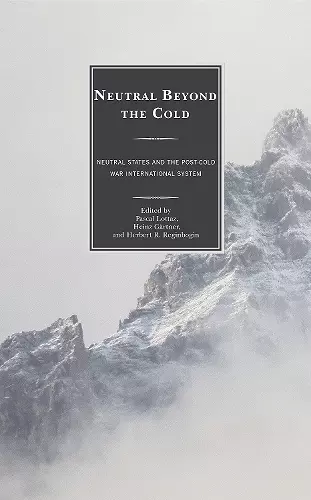Neutral Beyond the Cold
Neutral States and the Post-Cold War International System
Herbert R Reginbogin editor Heinz Gärtner editor Pascal Lottaz editor
Format:Hardback
Publisher:Bloomsbury Publishing PLC
Published:29th Jun '22
Currently unavailable, and unfortunately no date known when it will be back

The collapse of the Soviet Union and the wars in Yugoslavia radically changed the security environment in Europe and Central Asia. Some predictions assumed the emerging unipolarity of the liberal world order would end neutrality policies in East and West, but, as this volume shows, this was not the case. While some traditional Cold War neutrals like Sweden and Finland have been edging closer to security alignment with western institutions, there are others like Austria, Switzerland, Ireland, and Malta that remained committed to their traditional nonaligned foreign policy approaches. More importantly, there are areas of Eurasia that developed new forms of neutrality policies, most of them only noticed on the margins of academic discourse. This is the first book to systematically explore this “new neutralism” of the Post-Cold War. In part one, the book analyzes contemporary neutrality discourse on several levels like international organizations (UN, ASEAN), diplomacy, and academic theory. Part two discusses neutrality-related policy developments in Belarus, Moldova, Ukraine, Georgia, Serbia, Turkmenistan, Afghanistan, and Mongolia. Together, the 15 chapters show how on this vast, connected landmass references to neutrality have remained a staple of international politics.
The concept of neutrality in the international system dates back more than 350 years, but it gained particular salience after 1945, when Europe and the Asia-Pacific region were divided between rival Cold War blocs led by the United States and the Soviet Union. The starkness of the Cold War divide spurred some countries to seek permanent neutrality, avoiding affiliation with either bloc. Outside Europe, as decolonization led to the emergence of dozens of new states, many joined what became the Nonaligned Movement, a grouping that eventually encompassed 120 countries around the world. The end of the Cold War division of Europe in 1989-1991 prompted speculation that neutrality in the post-Cold War world had lost its raison d'être. This book shows that such claims were incorrect. Although the meaning of neutrality has changed in the post-Cold War era, the concept retains much of its cachet. The essays gathered here explain why many countries nowadays continue to pursue some variation of neutrality. Even readers who might question some of the arguments in the book will find it an exceptionally valuable and stimulating collection of ideas about the multiple forms of neutrality in the post-Cold War international system. -- Mark Kramer, Harvard University
This volume opens a fascinating overview on how the fluid, varied and always contested policy of neutrality has traveled through the post-Cold War decades -- disappearing here, resurfacing there. Extending the scope of analysis in both analytical and geographical terms, the chapters of this volume truly reach beyond the established western and Eurocentric Cold War and post-Cold War narratives of neutrality. The end of neutrality has been proclaimed many times in history, yet, as this volume shows, as long as there will be wars and conflicts, there will be formulations of neutrality as well. -- Johanna Rainio-Niemi, University of Helsinki
ISBN: 9781666901665
Dimensions: 227mm x 160mm x 25mm
Weight: 603g
326 pages